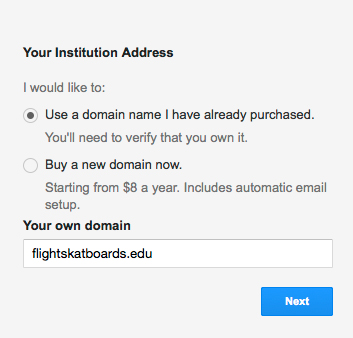Google Classroom enables teachers to create an online classroom area in which they can manage all the documents that their students need. Documents are stored on Google Drive and can be edited in Drive’s apps, such as Google Docs, Sheets, and so on. But what separates Google Classroom from the regular Google Drive experience is the teacher/student interface, which Google designed for the way teachers and students think and work.
What does Google Classroom do?
Google Classroom sits between you and Google Drive and provides a teacher/student-friendly way of managing classroom documents. Here’s what you can do with Google Classroom:
Make assignments: The main thing you, as the teacher, will do with Google Classroom is making homework assignments for your students. When you create an assignment, you can upload the necessary documents for the students to read or work on. Students receive e-mail notification of new assignment. The students “turn in” the assignments when finished, and you can then grade the assignments.
Make announcements: If you have a quick announcement for the entire class, you can quickly type in the announcement, which is e-mailed to all your students in the class.
Store classroom materials: The materials you add to an assignment aren’t the only documents you can store. You can store any other necessary documents for students on Google Drive.
Allow students to interact: Students have the ability to comment on assignments and announcements, as well as e-mail each other through the Classroom interface.
When you create documents for your students, you may want to use the Google apps, such as Google Docs and Sheets, rather than third-party applications, like Microsoft Word or Excel. The reason for this is that Google apps are fully integrated with Classroom, whereas with third-party apps you need to do a lot of downloading, converting, and re-uploading of documents. So, when a student opens a Google Doc to work on, changes are automatically saved in the document on Google Drive, which you can then grade when completed, without having to download or re-upload the document.
How to get started with Google Classroom
Like other Google applications, you need a Google account to use it. But not just any Google account will do for Classroom; you need a Google Apps for Education account. This is different than your standard Google account. Follow the steps below to set one up.
Make sure you have all the appropriate permissions to set this up from your institution and/or department.
Open a Web browser and go to classroom.google.com. You have to sign in with a Google account.
If you’re using a regular Google account, you’ll see a message that says “Sorry! Classroom is only available for Google Apps for Education Users at this time.” Click the Get Started with Apps button.
On the Google Apps for Education page, you can read all about the service, or just click the Get Apps Today button in the top right.
Fill out the form with your institutional information and click Next.
Most likely, your school has a Web site and you’ll want to use that. Click the Use a Domain Name I Have Already Purchased option and type in the domain (see Figure 1).
Click Next.
Type in the username and password that you want to use.
Type in the requested text in the picture to prove you’re not a robot, check the Read-and-Agree box, and click Accept and Signup.
Google creates your account and logs you in to the admin portal. From there, you’ll have to verify your domain, which means you’ll have to prove you “own” it. If you’re using your school’s domain, you’ll need your Webmaster’s help on that step.
If, in Step 5, you don’t have a domain that you can use, you can purchase your own through Google. A .com or .org domain costs $12 per year; a .net domain costs $10. If you choose this option, you’ll be lead through the purchase process; you’ll need a credit card to charge the domain fee to.

Source: google.com





